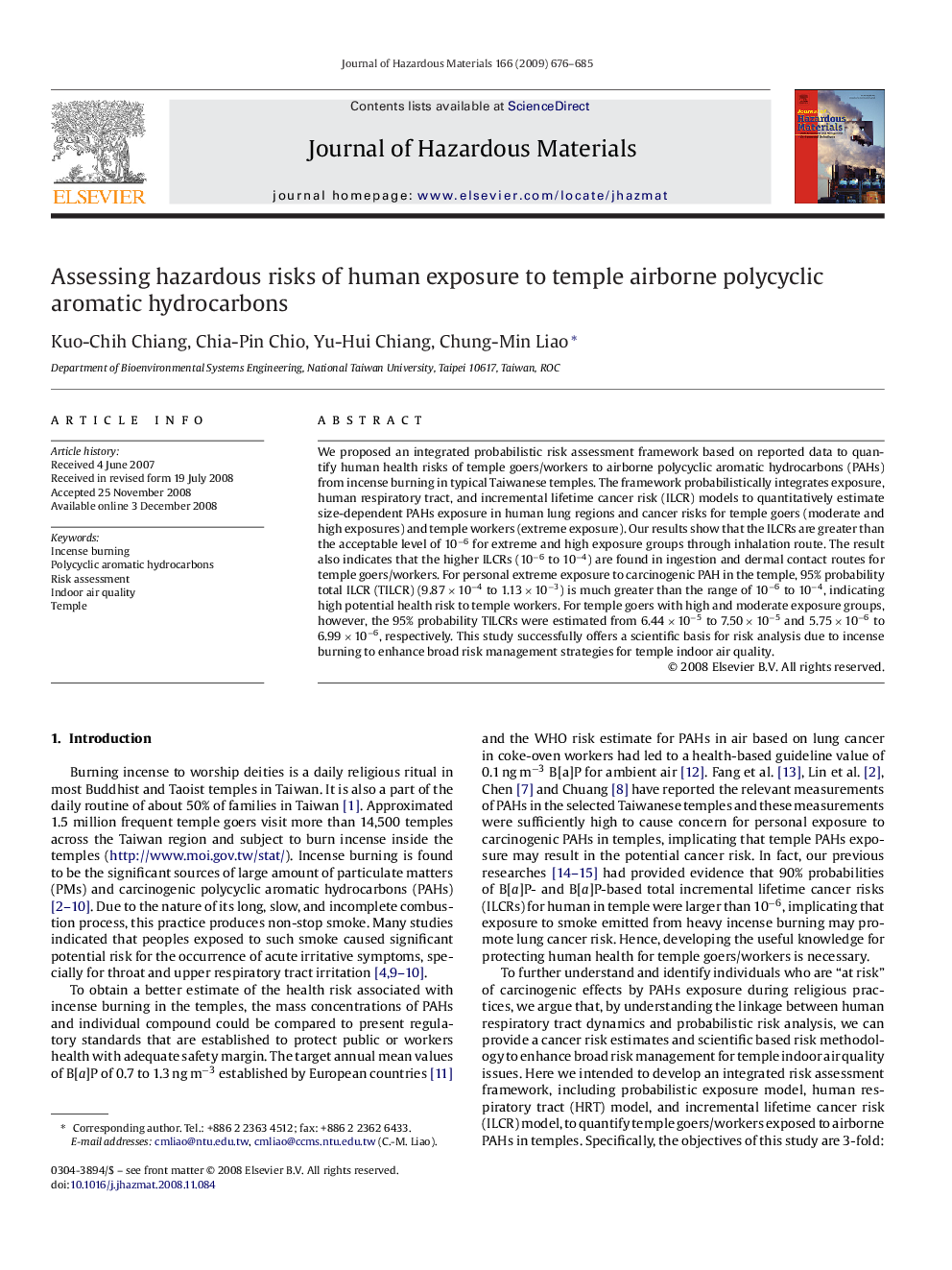| Article ID | Journal | Published Year | Pages | File Type |
|---|---|---|---|---|
| 581996 | Journal of Hazardous Materials | 2009 | 10 Pages |
Abstract
We proposed an integrated probabilistic risk assessment framework based on reported data to quantify human health risks of temple goers/workers to airborne polycyclic aromatic hydrocarbons (PAHs) from incense burning in typical Taiwanese temples. The framework probabilistically integrates exposure, human respiratory tract, and incremental lifetime cancer risk (ILCR) models to quantitatively estimate size-dependent PAHs exposure in human lung regions and cancer risks for temple goers (moderate and high exposures) and temple workers (extreme exposure). Our results show that the ILCRs are greater than the acceptable level of 10â6 for extreme and high exposure groups through inhalation route. The result also indicates that the higher ILCRs (10â6 to 10â4) are found in ingestion and dermal contact routes for temple goers/workers. For personal extreme exposure to carcinogenic PAH in the temple, 95% probability total ILCR (TILCR) (9.87Â ÃÂ 10â4 to 1.13Â ÃÂ 10â3) is much greater than the range of 10â6 to 10â4, indicating high potential health risk to temple workers. For temple goers with high and moderate exposure groups, however, the 95% probability TILCRs were estimated from 6.44Â ÃÂ 10â5 to 7.50Â ÃÂ 10â5 and 5.75Â ÃÂ 10â6 to 6.99Â ÃÂ 10â6, respectively. This study successfully offers a scientific basis for risk analysis due to incense burning to enhance broad risk management strategies for temple indoor air quality.
Related Topics
Physical Sciences and Engineering
Chemical Engineering
Chemical Health and Safety
Authors
Kuo-Chih Chiang, Chia-Pin Chio, Yu-Hui Chiang, Chung-Min Liao,
